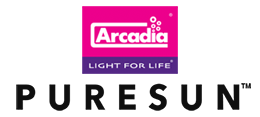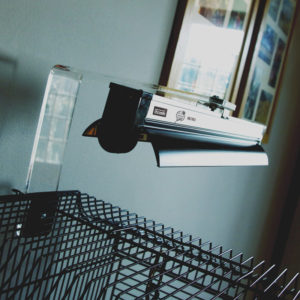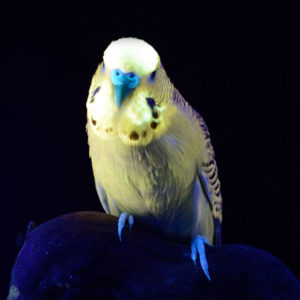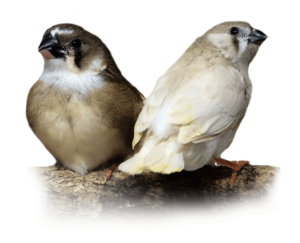
Small Mammals
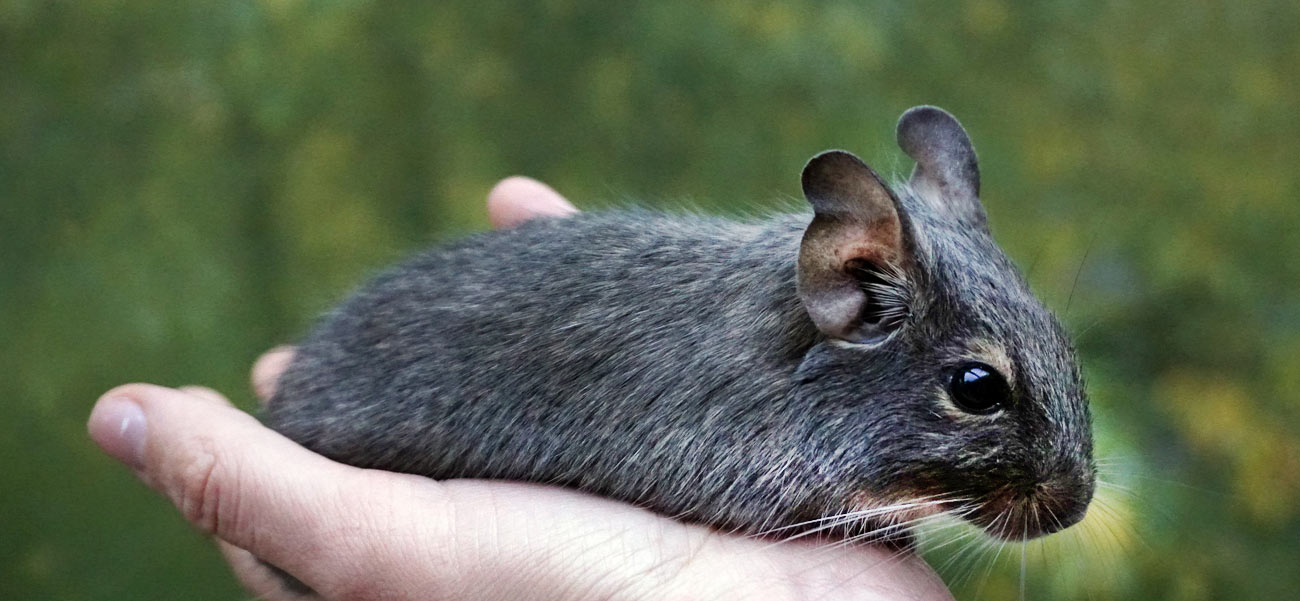
Making up for that missing sunlight
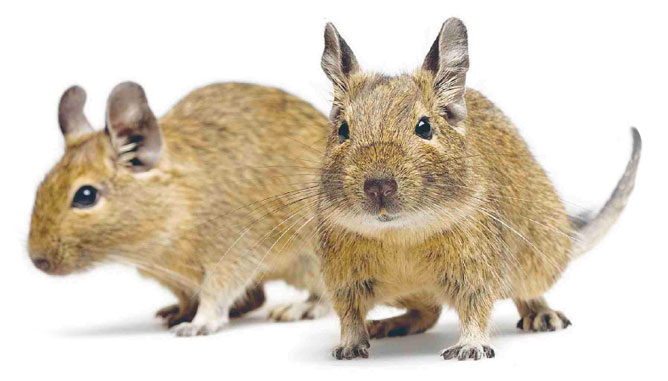
Degus are active during the day.
We usually feel better after a spell of sunny weather – and this is not just coincidence. It acts as a tonic that helps to keep us healthy. But what about small furry pets living indoors permanently, without access to sunlight, as they would have in the wild? Lighting expert and small animal keeper John Courtney-Smith sets out his thoughts in what has been an overlooked area.
Our knowledge of the care needs of our small furry pets has grown significantly over recent years, and we now share our homes with a wider variety than ever before. In recent years, there has been an upsurge in the numbers of chinchillas, jerds, degus, pygmy hedgehogs and sugar gliders.
Other areas of pet keeping have grown in popularity too, with many tortoises, lizards and snakes being kept. It is well recognised that these cold-blooded animals rely not just upon the sun for energy from its heat, but they also benefit directly from the sun’s light, particularly light known as UVA and UVB, found in the ultraviolet part of the spectrum.
They utilise this to make vitamin D3 in this bodies. This in turn is crucial to allow them to absorb calcium from their diet into their bodies. Without this vital mineral, they will suffer from weak bones and show other symptoms too, of what is known as metabolic bone disease (MBD).
Did you know?
While ‘complete’ small animal foods are supplemented with vitamin D3, and you can obviously obtain supplements too, the overall benefits of providing suitable UV lighting extend beyond this, helping your pet to see the world as it would outdoors.

Sunlight has a tonic effect.
It is important to re-create the UV index of each species in a way that is safe
Nor are they alone, of course. Birds and mammals – including ourselves – also benefit from the sun in the same way. Children commonly used to suffer from the disease known as rickets, which is basically the same as MBD, and it has been recorded that lack of exposure to sunlight also has an impact not just on people’s health, but also their general sense of well-being.
It is very common to use an artificial source of UV light in the form of a lamp for reptiles, amphibians and pet birds kept indoors, even though their diets are usually supplemented with vitamin D3 too. Chicken farmers even use this type of lighting to keep barn hens in tip top condition and laying well. The positive effects are well documented and increasing numbers of us are now countering the effects of winter by using a seasonal affective disorder (SAD) lamp.
Understanding the cycle
So what about our furry pets? How do these animals use the sun? Do they suffer with bone density and blood chemistry disorders, and how do we decide what is safe and effective for them?
Bone density problems, which can be a sign of MBD, are well documented in many species. Guinea pigs are particularly vulnerable to suffering vitamin D deficiency issues, possibly because they are naturally active during the day, and it is now clear that sugar gliders in particular are really vulnerable to bone issues of this type.
We know that any animal with skin, hair, feathers or scales rely on sunlight as the key components of the D3 cycle. This begins under the skin after a period of exposure to the wavelengths of light emitted by the sun. It is a cyclical, biological process that depends on many external factors including heat, light, cool and rest.
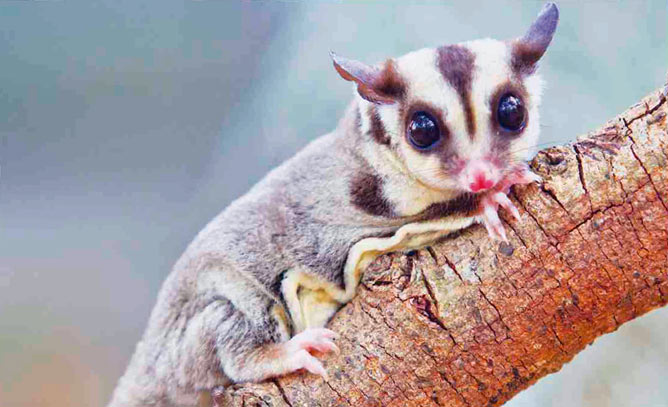
Light enters the body through the skin, via exposed areas which may include the feet, nose and eyelids in the case of small animals with a typical fairly dense covering of fur, and causes a chemical reaction in the underlying dermal layer of the skin. The provitamin D present here is converted to pre-vitamin D as a result of the UVB light falling on the exposed skin in the first part of this process. It modified again, before being released into the blood as a hormone called calcediol.
This is then carried around the body until it reaches the kidneys, where it is converted again to calcetriol and finally used as vitamin D3. It is important to bear in mind that this is a natural process with a in-built safety feature. This means that vitamin D3 produced from UVB light by this process cannot be over-produced and stored in the body. In the case of synthetic supplements, however, if you overdose with these products, they can accumulate in the body, and can ultimately give rise to serious health problems.
Individual lifestyles
When choosing a lamp for a small furry pet, you need to consider the habitat where its ancestors originated. It is important to re-create the UV index of each species in a way that is safe and meets their behaviour and needs. There are key difference amongst different types of small mammal – those are nocturnal clearly need less light exposure.
Water is important!
Keeping an animal well hydrated is essential for a variety of reasons, not least so that Vitamin D3 can be produced and utilised. Make sure that your pets always have access to a good supply of clean fresh water. Ideally, it should be altered to remove additives put in for human benefit
In contrast, originating from a locality close to the Equator, where the sun’s rays are at their most intense, it is perhaps not surprising that sugar gliders have a particular need for good lighting. Equally, originating from high altitude in the Andes of South America, and being active during the day, so guinea pigs, degus and similar species are more vulnerable to a vitamin D3 shortfall, compared with most rats and mice.
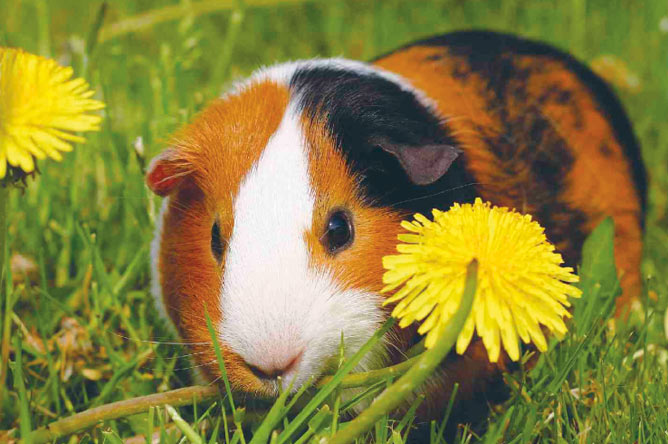
Lamp limitations
The sun is by far the best source of light and energy from light, but for those of us who keep our small furry pets inside, there are now efficient and effective UVB-emitting lamps available.
Unfortunately, the necessary UV radiation will not travel through ordinary glass, so even in a sunny room (where obviously, as always, they should not be allowed to become too hot, leaving them vulnerable to heat stroke), small furry pets will not benefit from the sun’s radiation.
The high quality UV lamps available today will, however, provide visible and invisible light in the form of UVA and UVB. They are specially designed, combining a particular type of glass and an expensive group of phosphors to produce and project forward UV rays.
There are now efficient and effective UVB-emitting lamps available.
None of these lamps obviously has the power of the sun. They have a set of definite limitations and these must be kept in mind when you choose what you need for your small furry pets. Firstly, you will notice that UVB lamps advertise a percentage of UVB on their packaging.
The usual figures are 2%, 6% and 12% UVB. This denotes the percentage of total light produced from the lamp as UVB. This effectively means that the higher the percentage quoted, so the stronger the dose of UVB. The UVB output also has another limiting factor, which is that it does not travel very far from its source. So the further from a lamp light that it has to travel, so the weaker will be the percentage or UV index as it is also known.
In effect, the further that your lamp is away from your targeted basking spot, so the higher will be the percentage of UVB is required. UVA travels far better than
UVB, however, and is primarily used in animal vision. It is thought that mammals can rely on UVA to see what to us are invisible fluorescent markers, helping them to find food sources such as fruits, flowers and insects. It may even help with mate selection.
Unfortunately, the phosphors that generate UVB wear out very quickly. They will get weaker and weaker, with the UVB output finally declining below a useful threshold. In the case of quality, European-made lamps though, such as those produced by Arcadia, the UVB content is guaranteed for an entire year. After this period, the lamp will need to be changed. This is necessary even though it will still be producing visible light, because its UVB output would have declined to such an extent that it is no longer of value.
A cautionary note
It is important that lamps of this type have adequate protection from UVC, with this type of UV light being known to interfere with the DNA in cells and linked to cancer. There have been incidences of unregulated lamps that do not have this protection entering the market via online auction sites, so play it safe and buy a brand that is guaranteed to offer you and your pets protection.
Full spectrum vs. full spectrum + UV
Don’t be confused by the term “full spectrum” when looking to purchase a lamp. This simply means that a lamp is emitting light at around 6.5k Kelvin which corresponds to the colour often described as “natural daylight”. In short, this is just a lamp that produces light of a natural colour, but it will not emit UVB and therefore, it has no beneficial impact on the health of your pets. Full spectrum + UV lamps are just that though – they are full spectrum, natural sunlight lamps with an added UVB output, which is what you want for this purpose. If you are in any doubt, ask for the branded lamp’s data sheet. You need to see a peak in the light spectrum diagram here at 295-310nm. This is the significant range for a lamp that is emitting UVB.
Light and shade
When using a source of light above your pet, we should only ever illuminate a small part of their enclosure. This is particularly important in the case of many rodents, which tend to live much of their lives in the shadows. Every animal needs to be able to self regulate its own exposure between well-lit and shady areas. It would be too stressful to provide a bright light source over the whole enclosure for them.
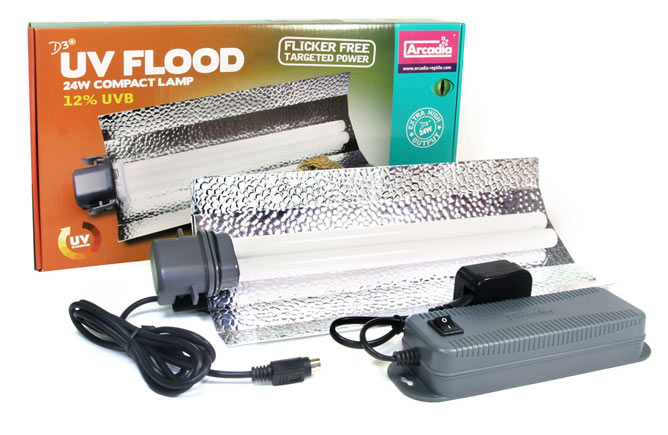
One of the lighting systems, complete with a reflector, that can be used as a UVB source.
It is also very important to re-create the UV index for each species corresponding to its natural environment. This would typically only be provided over a third to a half of the total area of the enclosure. It then provides an area of emission that is wide enough to be used by the animal, but leaves a gentle gradient into shade in which the animal can retreat for periods, if it wishes to do so.
Start by using a search engine to look at the weather averages where your chosen species occurs in the wild. Let us take the sugar glider as an example. If we look at the weather on the Indonesian islands where it originates, the average temperature is around 28°C (82°F) and it is very humid, reflecting the high rainfall there. The UV Index is 6-7, which is rarely experienced here in a typical UK summer.
We know that sugar gliders are highly crepuscular, meaning that they are most active at dawn and dusk, and that they live in the trees and therefore use what is called ‘leaf scatter illumination’. This simply describes rays or shafts of light that pass down through the forest canopy. These shafts of light can be very narrow but it is important to note that these shafts still contain the full power of the sun. It is therefore possible that a sugar glider could curl up in a tree and still benefit from the sun, as a small shaft of light hits its foot.
In the case of a wild sugar glider, it seems likely that the majority of its exposure to sunlight would take place early in the morning and last thing in the evening, just before darkness falls. It is then a matter of taking into consideration both the fall-off in the sun’s power at these times of the day and also the environment in which these marsupials live.
In this case, the UV index to which sugar gliders are likely to be exposed in the wild works out on average to a figure of 0.50 to 2.00. To put this in some perspective, this is around the light level that we get in the UK in early evening on a summer’s day. A sugar glider would thus be exposed to a measurable and therefore usable level of sunlight as it goes about its early period of activity,
before darkness falls.
Interestingly, it is now known that most crepuscular animals have evolved an area of skin that is very thin and can therefore gather in low quantities of light very quickly. This is the opposite of a diurnal animal (one that is active during the daytime), such as a camel, which will have developed to live in an environment with a high UV index environment. Both the sugar glider and camel use light in the same way, but the camel will have evolved a thicker skin or a more dense covering over the skin so that it can spend longer periods exposed to full sun, absorbing UVB more slowly.
Keep your pets safe!
- Start with restricted periods of light exposure, especially for animals that have not have access to UVB before.
- Make sure that rodents and rabbits cannot access any trailing wires, which they could then gnaw, with potentially fatal consequences.
- Always use the correct reflector fitted behind the lamp. Two-thirds of the total light output from a lamp is wasted if no refector is being used.
- Light sources MUST always be fitted directly above the animal’s quarters, and never to the side. Light entering the eye side on poses a very real health risk, thanks to the glare.
- Change lamps once a year to make sure that the UVB content is adequate throughout.
- Do not allow an animal to lie for long periods at a distance closer than 30cm (12in) to the lamp.
- Provide a full and varied diet that is supplemented with any missing vitamins and minerals.
- Always match areas of bright light with equal or greater areas of cool and shade.
- If you have any worries about MBD or other bone density issues, seek the advice of an experienced small animal vet as soon as possible.
- Never use excessive amounts of a supplement, as this is likely to be harmful, particularly over the longer term. Follow the instructions for use and work out the dosage accurately, based on the size, type and weight of your pet.
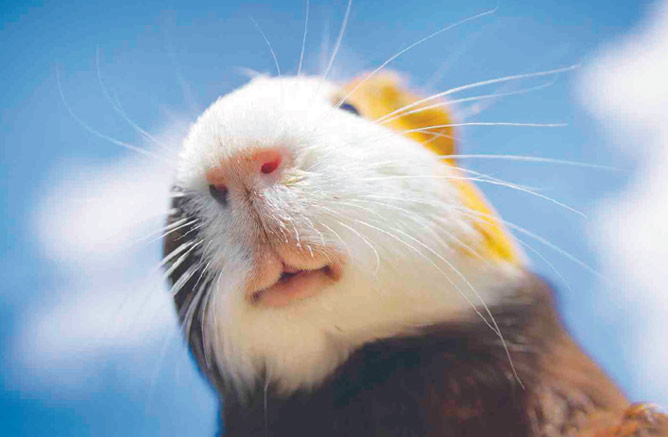
How is this achieved in practice?
Start by looking at the size of your pet’s quarters, and the décor here, and choose which will be the well-lit side, and which will be the shaded side. I always light the left side, but the choice is yours. Then you need to use the data about the environment where these animals occur in the wild, in order to create a suitable environment.
The upper index, representing the highest light output, should be about 30cm (12in) from the lamp and reflector itself. So decorate your cage accordingly. Make sure that there are plenty of climbing branches and hides so that the animal can chose an area of light between this area of its quarters, where the UV output will be at its strongest, and total shade elsewhere in the enclosure.
You then choose a lamp with a suitable percentage that recreates the UV index at that point. In the terms of a sugar glider, I would suggest using a 2.4% UVFLOOD fitting. This is marketed as “ParrotPro” but it is more than suitable for all crepuscular animals.
It can be fitted over the bright end of the enclosure and used with a timer to provide appropriate light at the times of days that are suitable for this species. In the case of a sugar glider therefore, I would have the lighting coming on at 7am for two hours, then for a further hour at midday, and finally another 2-3 hours each day, starting at 5pm. This will match the sugar glider’s crepuscular lifestyle, and the corresponding light exposure they would experience in the wild.
However, for animals that are not used to bright light or have never been outside, this can be a shock! So make the changes gradually at first. Start on day one by only leaving the light on for 20 minutes, and the start to increase the exposure by 20 minutes a day, until you reach the required period of light exposure, often referred to as the photoperiod. Watch the animals’ behaviour, and only progress at a pace that they seem comfortable with, and as mentioned, do not light the whole enclosure.
Some exceptions
As with everything in life, there are always exceptions to the rule when it comes to lighting. Certain species will require more light in a stronger dose. Degus are probably one of these species, along with guinea pigs, being out and about in their South American homeland during the day. In contrast, some other species, such as hamsters that naturally tend to spend most of their time underground in burrows, may actively hide away from a light source and avoid it.
Another consideration is the way in which colour variants, particular albinos or those with much paler colouration than typically seen in the wild, have now become established in a variety of species as the result of domestication. Those with pink or red eyes are very sensitive to light sources. It is probably better not to use artificial lighting in such cases, but to rely instead on dietary supplementation of Vitamin D3 alone. It is possible to check the level by means of blood tests if you are concerned.
Similarly, if you have a true nocturnal animal that is being fed a suitable diet with adequate vitamin D3, then a light may also not be needed. Please keep in mind, however, that most nocturnal animals are usually found asleep in full or part sun by day (assuming they do not retreat to an underground burrow), and they certainly do not have to be awake to gain benefit from the power of the sun.
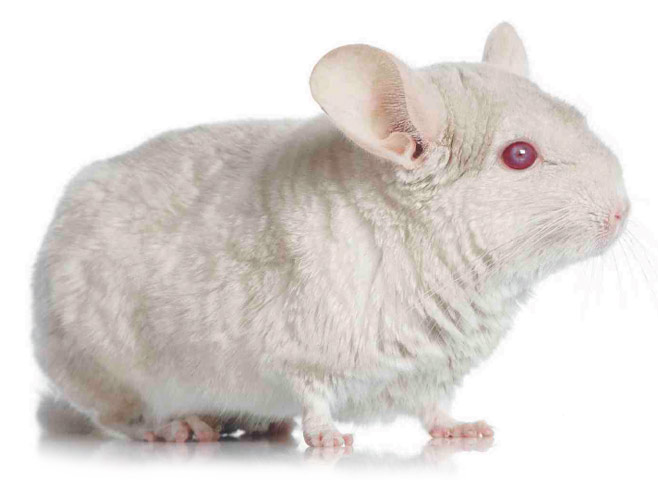
Share your thoughts
Do you have any questions about setting up a lighting system? If so, we’d like to hear from you, and John will answer them for you. Also, have you used lighting of this type with your small pets? Has it altered their behavior?
Article by our expert, John Courtney-Smith, for Small Furry Pets Magazine.
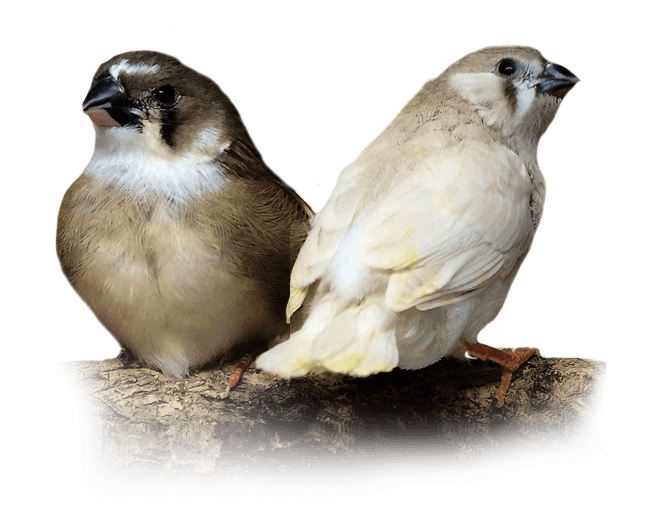
Using the very latest tech to ensure birds live long healthy lives.
For nearly 20 years the Arcadia Bird lamp has been the benchmark for full-spectrum lighting for birds.
Join us as we explore the science behind the product.


